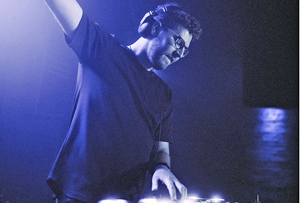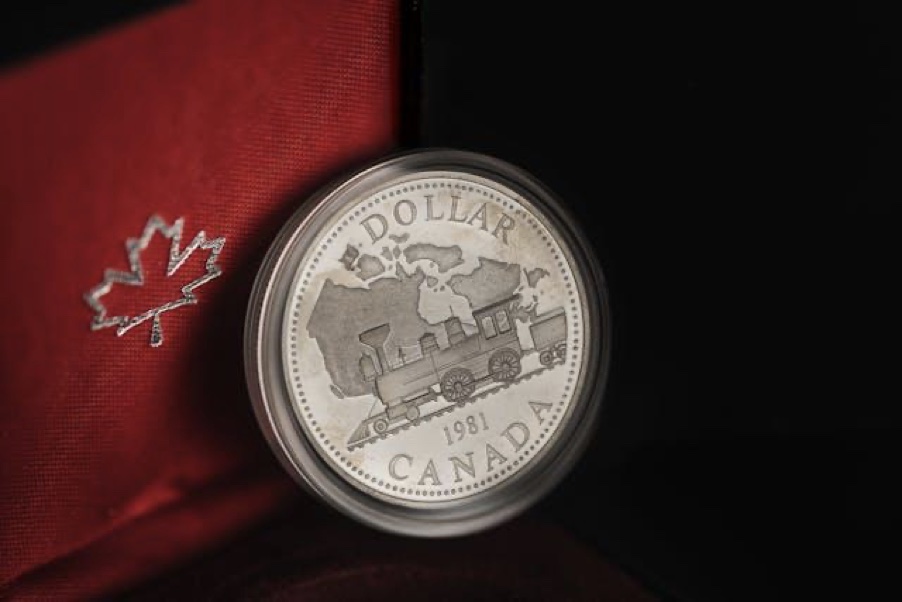Features
Winnipeg-based electronic music DJ in demand across Canada

By MYRON LOVE Since the time of Elvis, teenagers have been picking up guitars, forming bands and hoping to reach the stars. Jorel Minuk was one of the many struggling to break through.
The son of Cindy Bass and Morley Minuk would seem to have succeeded.
“I had always wanted to be a musician,” says Minuk, who was born in Toronto but grew up in Winnipeg. “As a teenager, I had been part of several bands – but never could find a group of solid guys who were serious about taking our music to the next level.”
The Gray Academy graduate’s musical life changed dramatically about 12 years ago when he was first exposed to electronic music. The performer who inspired him was a young American DJ, record producer, musician singer and songwriter who goes by the professional name of Skrillex.
In an interview that he did with Canadian Beats Media two years ago on the release of hisw new EP “Trenchant”, Minuk recalled that in his early years, he was a die-hard classic rock fan. However, after hearing the sounds in electronic music, he was immediately captivated by the unique flavours produced by some of his early heroes.”
“I thought that electronic music was super cool,” Minuk told this interviewer. “I really liked the vibes.”
In 2010, while still in university – he is a graduate of the Asper School of Business with a degree in marketing and human resources – he transformed himself musically-speaking into a DJ going by the moniker “PRZM”.
“I started as a DJ working the wedding circuit and local socials,” he says. “By 2014-16, I was doing bigger events and productions. Since 2016, I have been performing at clubs and electronic music festivals across Canada and even performed at a bar in New York.”
As Minuk – aka PRZM – has grown musically, his music has evolved to incorporate different genres and moods. In that interview with Canadian Beats Media, Minuk noted that he has a particular fondness for half-time bass music.
“My favourite thing about half-time music is the groove. I am obsessed with creating drums that can make people move at a slower bpm,” he told the CBM interviewer. “One of the things I love about bass music is how you get to experiment with it.
“The more obscure the sounds are, the more I like it. I appreciate all my peers who can produce music like this because it’s not easy to create music that blends such weird sounds, and yet sounds good.”
PRZM’s music has been featured on various labels such as: Tribal Trap, brednbutter, Phuture Collective, Gravitas and supported by the likes of Stylust, MORiLLO, and Perkulat0r and is available on Spotify, Applke Music and all the other streaming platforms.
Four years ago, Minuk joined musician friends Adrian Klassen and Marco Tummillo to form MAP (Mortar & Pestle). As reported last October on a website called “HAPPENINGNEXT”, “after releasing their debut EP ’Grant Ave.’ on Admit One Records in July, 2018, MAP has received massive support from their peers and has had their music played at several major North-American festivals including Shambhala, Dirtybird Campout and EDC Las Vegas. Following their Admit One Records debut, they have since released music on notable labels like Chub Rub, Rock Bottom, Late Night Munchies, Groovy Bone, and OFDM.”
“Most of our music is original,” Minuk points out.
Coming performances for MAP include an Exchange Event Centre program online and the Summer of Sound fro Friday, June 10, at Assiniboia Downs.
While Minuk enjoys his day job as digital marketing manager at Web Wizards Inc., he says that he hopes one day to be able to make his living as a full time musician playing festivals throughout North America.
Features
“Kaplan’s Plot” – newly released novel set in Chicago is both historical fiction and psychological drama

Reviewed by BERNIE BELLAN I had been searching for a new book this summer that would be of particular interest to Jewish Post readers when I came across the title of a new book that had yet to be released, called “Kaplan’s Plot.” It had received quite a bit of buzz on a number of websites that spotlight books that have – at least in part – a Jewish theme, although it still had not been reviewed when I first read about it.
The plot of the book, as it was described in those initial previews, certainly appealed to me, as it was said to combine a story about a Jewish gangster in Chicago in the early part of the 20th century with a modern day story about a man whose life had come completely unravelled and who was forced to return to Chicago to live with his dying mother.
I’ve been a fan of Jewish gangster stories for years, especially ones written by our own Allan Levine – and I’d often published stories about real life Jewish gangsters – or Jewish gangster fighters – as the case may be, in the pages of The Jewish Post & News (also on jewishpostandnews.ca).
Last year, for instance, I wrote a review of a book called “The Incorruptibles,” about efforts by law-abiding Jews in New York City in the early part of the 20th century to fight corruption. You can read my review here: “The Incorruptibles.”
Also, in the past I’ve run stories about Jewish underworld figures who either lived in Winnipeg or had a strong Winnipeg connection. One of the most popular stories ever to appear on our website, for instance (and which is still being widely viewed), is one that was written by Bill Redekopp – a former writer for the Free Press, who had profiled a fascinating Winnipeg bootlegger by the name of Bill Wolchock in his book, “Crimes of the Century – Manitoba’s Most Notorious True Crimes.” You can read Redekopp’s story about Wolchock at “Bill Wolchock.”
Another story that garnered quite a bit of attention when it was first published was Martin Zeilig’s story about Winnipeg-born Al Smiley, which appeared in the March 29, 2017 issue of The Jewish Post & News. The most interesting tidibt in Martin’s story was that Smiley was was sitting beside the notorious Benjamin “Bugsy” Siegel when Siegel was murdered in 1947. That story doesn’t appear as a stand-alone story on our website, but you can find it by downloading the entire March 29, 2017 issue by entering a search through our “Search archive” link for Al Smiley.
One more story that dealt with Manitoba Jewish gangsters (and which also referenced the Bill Wolchock story) was one I wrote in 2023 titled “A deep dive into the lives of some shadier members of our community.” In that story I wrote about a book that was about to be published titled “Jukebox Empire: The Mob and the Dark Side of the American Dream.” It was the story of Wolf Rabin (born William “Wolfe” Rabinovitch), written by his nephew, David Rabinovitch.
All this serves as a very long winded preamble to a review of “Kaplan’s Plot.” I was somewhat disappointed to learn that the characters in the book are all fictitious, since the mobsters are so vividly drawn – although there are very brief references to real-life mobsters, including Al Capone, Meyer Lansky and Charles “Lucky” Luciano, that make you wonder whether some of the other mobsters might also have been real people.
According to information available about the author, Jason Diamond, this is his very first novel – a very impressive debut. He certainly brings to life a very nasty Chicago in the early part of the 20th century.
What makes what Diamond has written an even more admirable achievement is that the plot works both as a riveting mystery and as a thoughtful examination of a mother and son relationship.
The story alternates between a story set in modern day Chicago (in 2023) and another story that begins in Odesa in Ukraine in 1909, but soon moves to Chicago shortly thereafter.
At first, we read about a character by the name of Elijah Mendes, who has just returned to Chicago from the Bay area, where a business venture in which he was involved has collapsed. Elijah’s mother, Eve, is dying from cancer, but she certainly retains enough strength to carry on with quite a few activities – enabled by her constant puffing on a vape pen. Eve, it turns out, has been a very accomplished poetess during her life and, although she and her late husband Peter were financially quite comfortable, she scoffs at what she regards as Elijah’s obsession with material pursuits.
Eve doesn’t pay much attention to mundane day to day matters, including opening the mail, but when Elijah discovers a series of letters from something called the Hebrew Benevolent Society, his curiosity is piqued and he sets out do discover what those letters are all about.
The chapters alternate between modern and older Chicago, as we are introduced to the Kaplan brothers – Yitzhak and Solomon or, as they come to be known in America – Itz and Sol. The brothers have narrowly escaped a pogrom in Odesa when their parents were able to secure passage for them on a boat destined for Hamburg. Eventually they find themselves on a ship sailing to America, where they make the acquaintance of a character by the name of Hershey.
Hershey tells the boys that he can help them find a place to live in Chicago, where he introduces them to Avi who, it turns out, is a major figure in the Jewish underworld there.
Diamond provides a rich description of what life was like in Chicago back in the day when the city was divided among different ethnic groups who held sway over their own respective territories and when it was dangerous to cross over into the wrong part of town.
As the story develops, we learn that Elijah is actually the grandson of Itz Kaplan, but knows nothing about his grandfather’s very shady past – beyond having been told that he was a “businessman.” When he goes to the building housing the Hebrew Benevolent Society, however, he finds out that there is an entirely new aspect to his family’s past – which leads to his wanting to probe deeply into his family’s history.
Elijah’s own demons – including past drug addiction, a failed marriage, and a deep insecurity about his own ability to succeed in business, come to the fore, but his mother’s refusal to discuss her family’s history haunts him even further.
As the book moves in parallel tracks between two time periods we find out more about Itz Kaplan – and just how malevolent a character he was. And, at the same time as Elijah learns more about Itz, he begins to better understand why his relationship with his mother had gone off the rails.
The mystery of what happened to Itz’s brother, Sol, about whom Elijah had not even known had existed, figures into both stories – the one set in early 20th century Chicago, and the one set in modern Chicago, as Elijah tries to get his mother to open up about her family.
Jason Diamond provides wonderful descriptions of some of the minutiae of Jewish life back in the day when keeping kosher was an essential element of Jewish life. Sol, for instance, is a butcher (something that his father was as well back in Odesa) and maintains a rigid observance of all Jewish laws. He is fastidious about adhering to the quite complex details of butchering meat according to the laws of kashrut, for instance.
Itz, in contrast, who has been deeply emotionally scarred by what he saw happen during the pogrom in Odesa, is totally indifferent to Jewish laws. At the same time though, the reader might develop a grudging admiration for just how cleverly Itz is able to navigate the jungle of the Chicago underworld. That’s why I began this review by referring to other Jewish crime figures – all of whom existed. While we might be repelled by their behaviour, we are often fascinated by the cleverness they exhibited in maneuvering through the almost constant danger that manifested their lives. And – it was knowing that they were living on a knife’s edge that often seemed to motivate them as they stared danger in the face.
Ultimately, Diamond brings it all home. The mystery behind Eve’s family is solved and there is some closure to the relationship between Elijah and Eve.
A truly absorbing story – although just released in September, “Kaplan’s Plot” has already garnered many positive reviews. One review on Goodreads, I note however, says that the reviewer is sick of “mob stories.” I suppose it’s quite evident that I’m a big fan of mob stories that have a Jewish element and, if you are a fan of that genre then “Kaplan’s Plot” is sure to capture your fancy. I’m not sure I’d recommend it as a Chanukah gift for the grandchildren, however – unless one of your grandchildren has aspirations of becoming a mobster.
“Kaplan’s Plot”
by Jason Diamond
Flatiron Books
320 pages
Published September, 2025
Features
CAD Performance in 2025: Key Factors Behind Its Recovery

The CAD is clawing back lost ground. Discover what pushed the loonie down in 2024, what’s lifting it in 2025, and why its future still hangs in the balance.
2024 was a strange year for the loonie. If you are an active currency trader, a quick look at a CAD/USD price chart would have you nodding in agreement. Yes, the year started off strong, but as the months rolled by, it was obvious that something was wrong, especially as we neared the end of Q3. The reason for the downtrend was clear. Most people agreed that it was the tariff threats from Washington, rate cuts at home, and a volatile global economy that were being reflected in the currency markets. And for a while, the CAD was stuck in that losing streak, with some experts even suggesting that there was still more to come.
As the new year rolled around, it didn’t seem like anything had changed. But by mid-2025, quiet shifts had turned into a noticeable recovery, with the loonie gaining back significant ground against the greenback. So, in this piece, we’ll break down what really dragged the Canadian dollar lower in 2024, what’s fueling its recovery this year, and whether this rebound is going to hold steady.
Understanding What Happened in 2024
At the start of the year (2024), one U.S. dollar traded for about 1.35 CAD, which translates to one Canadian dollar being valued at roughly 74 cents U.S. It wasn’t anything special at the time, especially after the levels of inflation and volatility of 2023. Still, economists noted that these were the few key factors that kept the loonie afloat early in the year:
- The price of oil made a comeback. Crude prices firmed up early in the year, supporting Canada’s export earnings and adding a tailwind to the currency.
- Employment figures were solid. Job growth held up, and steady wage gains helped offset the pressure of higher borrowing costs.
- The BoC held a steady interest rate. After an aggressive round of rate hikes in 2023, policymakers looked ready to pause and let the economy cool gradually.
All of these factors were thought to have helped build confidence in the Canadian economy and by mid-2024, the loonie had edged up toward 76-77 cents U.S.
Late-Year Turbulence
Not a lot of people saw it, but as Q2 2024 unfolded, the CAD started to look unattractive to currency market investors. How? Well, it started when the Bank of Canada (BoC) started to signal its intention to cut interest rates. It gave its clearest sign to this on April 10, 2024 when the bank highlighted that inflation was slowing down and it was leaving the door open for rate cuts. This announcement changed market expectations almost overnight.
Eventually, the first cut came on June 5, 2024. The BoC lowered its benchmark rate by 25 basis points from 5% to 4.75%, becoming the first major G7 central bank to start easing.
From there, the pace picked up with rates being reduced four more times. The market’s reactions to these cuts were immediate. And any currency trader with a reliable forex trading app saw each one unfold live. The CAD began to lose altitude as the yield gap with the U.S. widened. With lower returns on Canadian assets, investors favored the greenback. Adding to the pressure, the Trump campaign’s 25% tariff threat in September ignited the fears of a trade war. Which led to traders quickly pricing in potential hits to exports and investment, sending sentiment lower.

The 2025 Comeback
The CAD started 2025 trading at around 67 cents U.S., with some days even seeing it flirt with the 66-cent mark. So, it was a common assumption in the currency traders’ community that 2024 might repeat itself. But something was different this time. Every day, the loonie was quietly clawing back much of the ground it lost during the previous year’s slump.
So, what was different this time? Well, experts believe the panic that gripped both retail and institutional traders through late 2024 began to fade. As positive economic data started to filter in, confidence slowly returned alongside a few key drivers. By midyear, analysts were already talking about a turnaround rather than just a recovery attempt. The CAD was trading in the 72-73-cent U.S. range, up solidly from its January lows, and here’s its current rate.
Major Factors Behind the CAD’s Recovery
So, what helped the CAD? Well, there were a few clear factors that came together to turn sentiment around and put the loonie back on steadier footing.
- U.S. Dollar Weakness
A softer U.S. dollar was one of the clearest tailwinds for the CAD in 2025. The weakening of the USD started occurring when investors started to pull back from U.S. assets as political tension, fiscal worries, and softer economic data piled up.
What drove it?
- Trade and political uncertainty: Tariff moves and Washington infighting rattled investor confidence.
- Fiscal strain: Deficit concerns eroded trust in U.S. financial stability.
- Fed policy shifts: With the Federal Reserve showing interest in cutting rates (and actually doing so on September 16), the yield advantage that once favored the dollar began to fade.
As investors reduced exposure to U.S. assets, capital rotated into other major currencies. The CAD, being liquid and commodity-linked, was one of the key beneficiaries, strengthening almost by default as the greenback lost ground.
- Diverging Monetary Policy
Monetary policy divergence became another major driver. The Bank of Canada held its policy rate steady near 2.75% through Q2 2025 before cutting in September, signaling confidence that inflation was cooling without stalling growth. Meanwhile, the U.S. Federal Reserve began easing monetary policy with its first rate cut in September 2025, responding to slowing growth and softer inflation. This divergence in pace and tone helped support the Canadian dollar’s rebound.
This narrowing interest rate gap mattered. And with Canada offering relatively higher yields, foreign investors found the loonie more attractive, especially compared to the softening U.S. dollar. For traders, the CAD started to look like a better carry trade than it had in over a year.
- Easing Tariff Fears
Another major psychological lift came from the fading of tariff risks. In the first half of 2025, Trump’s proposed 25% tariffs on Canadian goods lost traction as political attention shifted elsewhere. While some concerns still lingered, the immediate threat of a trade shock began to ease. Cross-border trade flows regained a bit of momentum, and markets started to price in a smoother path for Canadian exports. That renewed confidence played a key role in supporting the loonie’s recovery.
Can the Loonie Hold Its Ground?
As 2025 moves forward, the consensus among analysts is cautious but constructive. Most expect the Canadian dollar to trade in the 1.33-1.36 range against the U.S. dollar, a level that points to stability. The worst of 2024’s volatility seems to be behind it, but the loonie’s next moves will still depend on how the global story unfolds.

A Currency That Refused to Stay Down
The past two years have been anything but smooth for the CAD, but this move has proven one thing: resilience runs deep. After weathering policy shifts, tariff scares, and market pessimism, the loonie has managed to rebuild its footing in 2025. Its recovery hasn’t been dramatic. It was grounded in solid fundamentals and steady confidence. For traders, that’s a reminder that sentiment can turn just as fast as it fades.
Features
Statistical Volatility Models in Slot Mechanics: Extended Expert Analysis Informed by Pistolo Casino
Analytical reviews of slot volatility often reference ecosystems similar to those found at Pistolo casino. Within the gambling research community, volatility is understood not as a marketing attribute, but as a technical framework that shapes how digital slot systems distribute outcomes over time. Expanding on earlier overviews, this extended analysis examines the deeper mathematical logic behind volatility classes, as well as their implications for long-term behavioural modelling.
Volatility as a Mathematical Architecture
Slot volatility is commonly divided into high-, medium-, and low-risk models, yet this simplified categorisation hides the structural complexity underneath. Developers configure several layers of probability weighting, which include:
- Event Density Layers – Each slot contains multiple weighted segments representing minor, medium, and rare outcomes.
- Return Frequency Curves – These curves dictate how the distribution of payouts drifts around the long-term equilibrium.
- Reel Weighting Matrices – Symbol appearance probability is shaped not only by frequency but also by conditional dependencies within each reel strip.
Research drawing on examples parallel to Pistolo casino shows that modern slots increasingly use modular probability blocks, making outcome variance more flexible and more precisely adjustable during development.
Behavioural Interpretation of Volatility Signals
From a player analytics perspective, volatility modelling helps identify how different user groups respond to varying risk structures. High-volatility mechanics frequently attract users who seek extended tension cycles and the possibility of occasional strong outcomes, while low-volatility systems are associated with steady-state gameplay and longer average session times.
Analysts also examine “volatility fatigue,” a concept describing the moment when prolonged dry cycles reduce engagement. By tracking these patterns, researchers can map how changes in event spacing affect decision-making, bet sizing, and persistence.
Simulation Methodology for Evaluating Volatility Accuracy
Technical audits rely heavily on large-scale simulations—sometimes exceeding fifty million iterations — to verify that the modelled volatility aligns with theoretical expectations. Key indicators include:
- Hit rate stability across long sequences
- Distribution symmetry, ensuring outcomes do not drift into accidental bias
- Deviation corridors, which define acceptable ranges for short-term anomalies
- Return-to-player convergence, showing whether the model equilibrates over time
When discrepancies appear, developers may adjust symbol weighting, probability intervals, or feature-trigger frequency until the system reaches internal balance consistent with regulatory and mathematical demands.
Volatility’s Role in Market Diversity
Volatility modelling helps explain the substantial variety between slot titles. Instead of relying solely on themes or graphics, modern game design differentiates titles by emotional rhythm and progression speed. This technical approach has led to more deliberate pacing structures where reward cycles, anticipation building, and event clustering are calibrated through mathematical systems rather than subjective intuition.
Conclusion
Volatility remains one of the most precise and data-driven components of slot design. Its study provides insight into outcome diversity, behavioural responses, and long-term predictability. Research frameworks referencing platforms comparable to Pistolo Casino highlight how volatility models shape modern gambling environments through measurable probability engineering and large-scale simulation.


